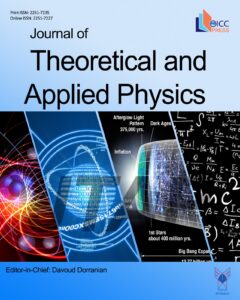Photoluminescence study of Au-Ag bimetallic nanoparticles supported on mesoporous silica SBA-15
Authors
Abstract
Bimetallic Au-Ag nanoparticles with homogeneous dispersion in amine-modified SBA-15 mesoporous silica channels were successfully synthesized by the post-modification method. The obtained nanocomposites with different component ratios were studied by structural, Physico-chemical, and optical analysis. The structural and Physico-chemical properties were studied by X-ray diffraction (XRD), transmission electron microscopy (TEM), Fourier transform infrared (FTIR) spectroscopy, and nitrogen adsorption-desorption isotherm measurement (BET). The optical properties were characterized by photoluminescence (PL) and UV-Vis spectroscopy. The photoluminescence and absorption spectra were strongly affected by the change in the compositional ratio of gold to silver nanoparticles due to the interactions of Au-Ag nanoparticles, the configuration of conduction electrons and their plasmonic properties. A significant enhancement was observed in the photoluminescence spectrum in the long-wavelength red emission at 640 nm for a one-to-one composition ratio of Au/Ag/SBA-15 nanocomposite. Since the light emission of most microorganisms is in the visible range, the nanocomposite produced can be proposed for applications in biosensor technology.




